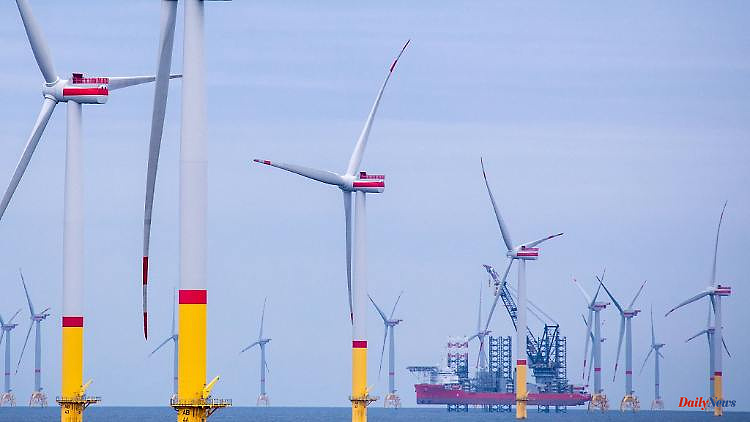While the expansion of wind power on land is weakening, Mecklenburg-Western Pomerania has big plans at sea. The industry expects a significant expansion within four years. If you ask the state government, this seems like an understatement.
Schwerin (dpa/mv) - According to industry plans, the capacity of wind power plants in the Baltic Sea is to double to around 2 gigawatts by 2026. With around one gigawatt of power, the 232 systems installed in the Baltic Sea to date only make up a fraction of the around 7.8 gigawatts in German waters, as reported by the German Wind Energy Association (BWE). The expansion in the Baltic Sea is currently still lagging behind.
The Economics Ministry in Schwerin is expecting an even faster ramp-up of energy generation at sea: The capacities under construction, planned or already approved by 2026 total two gigawatts, if all systems are actually built, the increase would be twice as large as according to BWE. The "Gennacker" wind farm north of the Darß, which has been approved since 2019, alone is given 865 megawatts.
Another area that could contribute another gigawatt by 2030 is not yet officially in the tender: by the end of the decade, the installed capacity in the Baltic Sea could quadruple to 4 gigawatts, so far all systems have been connected via the north-east.
However, citizens do not have to fear a visibly built-up coast. Only the first and smallest wind farm built in this country, "Baltic 1", is located in the coastal sea, i.e. within the zone of 12 nautical miles. The remainder of the existing parks were built in the exclusive economic zone (EEZ), which extends 200 nautical miles out to sea, according to the ministry.
The current expansion plans are overshadowed by the ideas of Federal Minister of Economics Robert Habeck (Greens). His ministry had presented a draft bill in which 30 gigawatts are named as the target for electricity generation at sea by 2030, 40 gigawatts by 2035 and then 70 gigawatts by 2045. Based on the current distribution between the North Sea and the Baltic Sea, the Baltic Sea would account for almost 8 gigawatts of electricity capacity to be generated by 2045. The federal cabinet approved this plan in April.
The ambitious plans evoke a mixed response from nature conservationists: The Bund Naturschutz supports the energy transition, but appeals to compensate for the associated higher economic use of the Baltic Sea - through the construction and maintenance of wind turbines - elsewhere. "The environmental status of the Baltic Sea will not be improved by playing off climate protection against marine nature conservation," says BUND project manager Susanna Knotz. Interventions in the marine environment have all too often been balanced on land in the past. From the point of view of conservationists, the infrastructure and operation have a sensitive impact on the marine environment, including through underwater noise.












